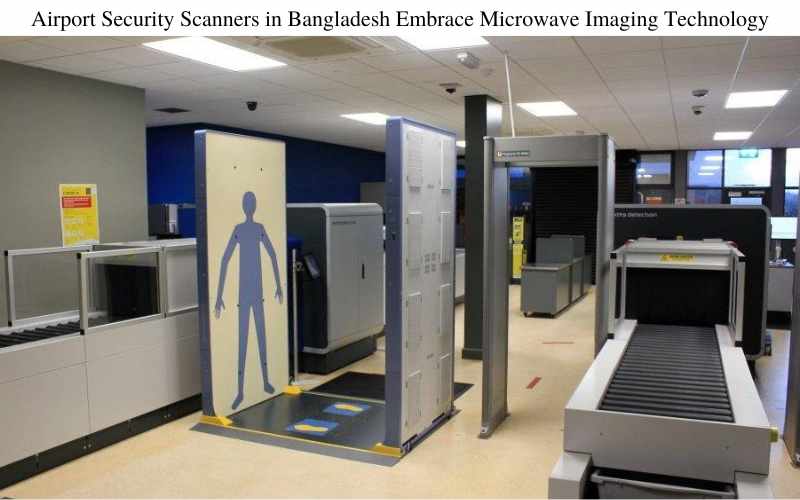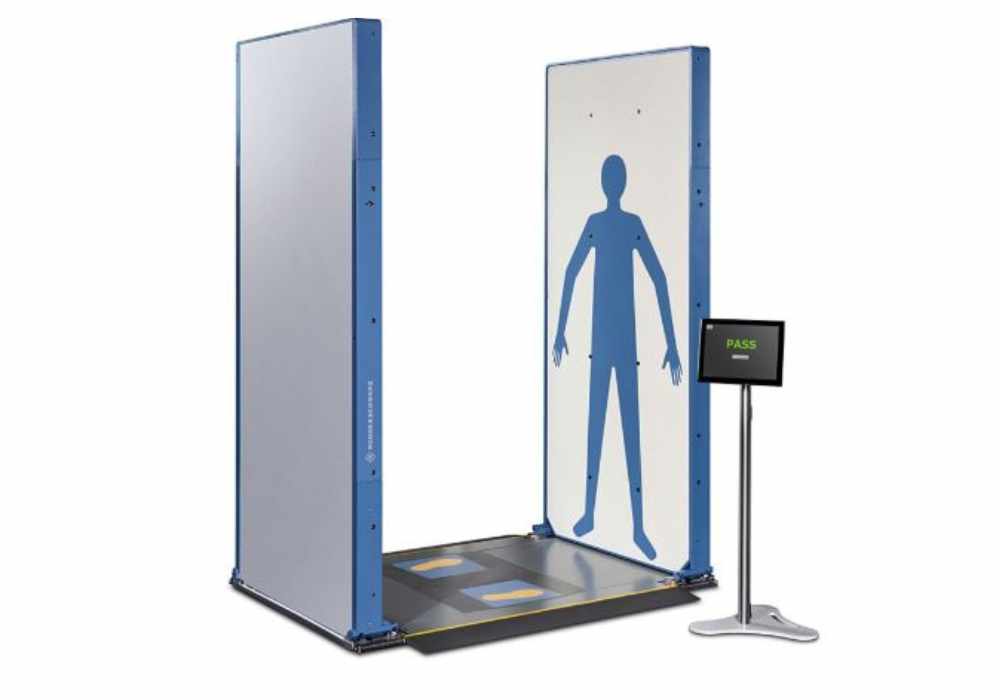Airport Security Scanners in Bangladesh top latest Technology
The bustling hum of departure lounges, the hurried scurry of luggage wheels, the ever-present thrum of anticipation – airports are microcosms of human movement, a kaleidoscope of journeys about to begin. And at the heart of this vibrant chaos lies a silent sentinel, safeguarding the skies: airport security.
For decades, X-ray scanners have been the stoic guardians of our skies, silently scrutinizing luggage and passengers for hidden threats. But as technology takes ever-bolder leaps, a new frontier is emerging in airport security: microwave imaging.
Bangladesh, a nation on the cusp of an aviation boom, is at the forefront of this revolution. Airports in Dhaka, Chittagong, and beyond are now deploying cutting-edge millimeter wave scanners, ushering in a new era of safer, faster, and more dignified security screening.

So, what exactly is microwave imaging, and why is Bangladesh betting big on it?
Imagine, if you will, a gentle electromagnetic embrace. Terahertz waves, a specific band of the microwave spectrum, bathe the passenger in their invisible luminescence. These waves, unlike their X-ray counterparts, don’t penetrate the body but bounce off its surface, creating a detailed 3D image akin to a high-resolution, heat-signature portrait.
What are the advantages of this technological leap?
- Privacy Personified: Unlike X-rays, millimeter wave scanners do not expose passengers to ionizing radiation, a major concern for frequent travelers and pregnant women. The technology essentially creates a detailed “shadow image,” revealing the contours of clothing and objects without compromising personal privacy.
- Safety Secured: Millimeter wave scanners excel at detecting non-metallic threats, weapons concealed beneath clothing, or explosives hidden in cavities. This enhances security by plugging a critical gap in traditional X-ray screening.
- Speeding Up the Rush: Gone are the days of long, snaking queues. Millimeter wave scanners are incredibly fast, processing passengers in mere seconds, significantly reducing congestion and streamlining the security process.
- Dignity in Every Step: The non-invasive nature of the technology eliminates the need for physical pat-downs, creating a more dignified and respectful security experience for passengers.

But is microwave imaging a silver bullet?
No technology is foolproof. Millimeter wave scanners can be susceptible to interference from certain materials and may struggle with complexly layered clothing. However, ongoing research and development are constantly refining the technology, improving its accuracy and addressing these limitations.
Bangladesh’s Pioneering Spirit:
The adoption of microwave imaging technology in Bangladesh is a testament to the nation’s commitment to innovation and aviation safety. It speaks volumes about a country proactively embracing cutting-edge solutions to ensure the smooth and secure flow of air travel.
This technological shift is not merely about safeguarding the skies; it’s about shaping the future of travel. It’s about empowering passengers with the confidence of knowing they are protected by the best available technology. It’s about reimagining the airport experience as one that is swift, secure, and, yes, even dignified.
As Bangladesh takes this bold stride into the future of airport security, the world watches with keen interest. This is not just a story about scanners and technology; it’s a story about progress, about human ingenuity, and about a nation soaring towards a brighter horizon.

So, the next time you step through an airport security scanner in Bangladesh, remember, you’re not just passing through a machine; you’re stepping into a new era of aviation security, an era marked by innovation, safety, and respect.
And who knows, this Bangladeshi leap of faith might just inspire the world to follow suit, shaping the future of air travel not just for a nation, but for the entire globe.